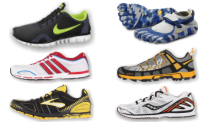 The flurry of new “minimalist” running shoes being released onto the market can be hard to keep up with these days. An article in Advertising Age recently reported that “according to SportsOneSource, lightweight products — loosely defined as shoes that weigh 9 oz. or less in a men’s size 9 — accounted for 28% of the running category in the second quarter. Minimalist styles, a subset of lightweight, accounted for 5% of the running category.” In the same article, Katherine Petrecca, collection manager for New Balance’s minimal line, was quoted as saying “Once you’ve made the transition [to a minimal or lightweight product] it’s difficult to go back. What will happen in the more mainstream channels remains to be seen, but in performance and specialty channels, it’s here to stay.” I would tend to agree with her, as I can’t possibly imagine myself ever going back to a more traditional running shoe after having made the switch to more minimal styles.
The flurry of new “minimalist” running shoes being released onto the market can be hard to keep up with these days. An article in Advertising Age recently reported that “according to SportsOneSource, lightweight products — loosely defined as shoes that weigh 9 oz. or less in a men’s size 9 — accounted for 28% of the running category in the second quarter. Minimalist styles, a subset of lightweight, accounted for 5% of the running category.” In the same article, Katherine Petrecca, collection manager for New Balance’s minimal line, was quoted as saying “Once you’ve made the transition [to a minimal or lightweight product] it’s difficult to go back. What will happen in the more mainstream channels remains to be seen, but in performance and specialty channels, it’s here to stay.” I would tend to agree with her, as I can’t possibly imagine myself ever going back to a more traditional running shoe after having made the switch to more minimal styles.
When statistics like these are released, I often ask myself which shoes are included in the various categories – it’s easy enough figure out which shoes weigh less than 9 oz, but which shoes are included in the “minimalist” group? If I had to guess, it’s probably things like the Vibram Fivefingers and Merrell Barefoot shoes, but I can’t be sure from the information provided. Would the New Balance Minimus Trail be included? How about a zero drop shoe that is well cushioned like the Altra Instinct?
It’s because of this ambiguity that I don’t like using the term “minimalist” to describe a specific category of shoes. I had a lengthy discussion in the comments section of a recent post about what constitutes a minimalist shoe, and though I have my own personal preferences when it comes to footwear, I repeatedly made the point that I don’t view minimalist as a category, but rather one end of a spectrum. I thought I’d use this post to elaborate a bit on my usage of the word “minimalist.”
To state is succinctly, I view a minimalist shoe as one that more closely approximates the barefoot running condition. As such, I view it as a relative term – i.e., one shoe can be more or less minimalist (or minimal?) than another. Yesterday I was teaching my first anatomy lab of the semester, and one of the topics I discuss are directional terms – superior/inferior, medial/lateral, proximal/distal and so on. In anatomy, these terms are typically used to describe the position of one body structure relative to some other body structure. For example, the brain is superior to the heart. I view the term minimalist in a similar way – the Vibram Fivefingers are more minimalist than the Saucony Kinvara. The Sacuony Kinvara is more minimalist than the Asics Nimbus. The Asics Nimbus is more minimalist than the Brooks Beast. The Brooks Beast is more minimalist than a ski boot. Etc., etc., etc…
If we view running footwear as a spectrum, on one end you have no shoe at all, or barefoot. In the barefoot condition cushioning and stability are provided by the inherent strength and control of the feet and legs, proprioreception/ground feel are maximized, there is no added weight on the lower extremity, the heel and forefoot are placed at the same level on the ground, the splay of the foot is not restricted when it contacts the ground, and flexibility is limited only by the structural limitations of an individual’s feet. Thus, more minimal shoes will:
a. require a runner to rely more on their own feet and legs to take care cushioning and stability
b. provide less sensory interference between the sole of the foot and the ground
c. have a lower height differential between the heel and forefoot (i.e., a lower heel-forefoot drop)
d. be lightweight
e. be wider in the forefoot to allow splay on contact
f. be more flexible
There are other factors that could be included here, but for me these are the most critical.
At the other end of the footwear spectrum, you would have footwear that attempt to use technology to control and stabilize the foot, extensive cushioning that dampens impact shock (but also impedes ground feel), greater heel-forefoot differential, typically heavier weight, and less flexibility. I don’t know what would be the best term to describe this end, but “maximalist” has been thrown about a bit here and there. Perhaps something like “Technological” might be more palatable, or “Cushion/Control.”
A shoe at the “Cushion/Control” end of the spectrum is one that attempts to do the work for you (whether it succeeds in this is an entirely different discussion…). It is a shoe that people use because they cannot or do not desire to rely on inherent control of things like cushioning and stability. You might view the extreme at this end as a walking boot used to treat stress fractures – a completely restrictive and controlling form of footwear.
The reality is that nobody is going to run in a walking boot, and few are going to run barefoot with any regularity. So, if we view the footwear spectrum in the context of running shoes, we might have motion control shoes like the Brooks Beast at one end, and barefoot-style shoes like the Vibram Fivefingers at the other. So our spectrum might begin to look like this:
Until recently, the vast majority of shoes found at shoe stores sat firmly on the left-hand side of this spectrum, with a few racing flats sprinkled around over to the right. With the recent influx of lightweight and more minimal shoes, the full spectrum is starting to fill out a bit, and a diversity of options are available to each runner (this, to me, is the most significant outcome of the minimalist movement). There are certainly shoes that will be hard to place along a spectrum like this (e.g., Newton shoes, the Altra Instinct), mainly because shoes can vary in so many ways. You might have an extremely lightweight shoe like the Brooks T7 Racer that has considerable cushioning and a standard 12mm heel lift. You might have a shoe with a small heel-forefoot drop that is fairly inflexible (e.g., New Balance Minimus Road) or that has pronation control technology (e.g., Saucony Mirage). Furthermore, within this spectrum there are also fairly well defined sub categories. Motion control shoes, stability shoes, racing flats, trail shoes, cross-country flats, and barefoot-style shoes (my preferred term for what some call the “minimalist” category) are all reasonably well-recognized groups.
Ultimately, I think a more complex way of classifying shoes might be helpful. Given enough quantitative data on a given suite of shoes, it might be possible to apply a multivariate statistical method like principal components analysis to identify clusters of similar types of shoes (would love to try this, but need to find the shoe data…). You could input parameters like weight, heel-forefoot differential, midsole durometer, midsole thickness at various locations, forefoot width, forefoot depth, etc. and get a sense of which shoes are most similar. I’m a stats geek, so this kind of thing intrigues me.
Finally, I think it’s important to emphasize that minimalist need no be the end goal for all runners, particularly if they are doing just fine in their current shoes. There are transition risks involved with running in shoes at the minimalist end of the spectrum. Similarly, a barefoot runner who suddenly decides that the Brooks Beast will be their next footwear choice should be just as wary. Bad things can happen when a dramatic change is made too quickly.
I’m not sure if this is at all helpful, but it’s something I’ve been thinking about for some time, and given the amount of time that I spend writing about “minimalist” footwear, I thought it might be helpful to better explain how I view things.
I’d love to hear what you think – feel free to leave a comment!
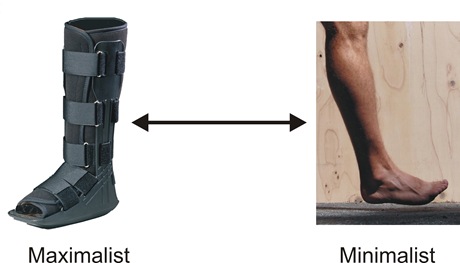

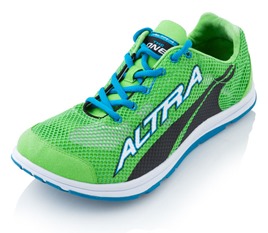
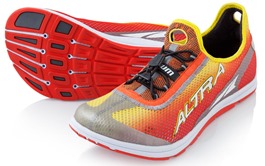
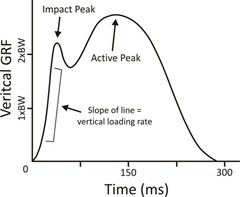
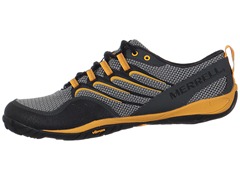














Pete this is a great article and something a lot of new runners should read. I had been noodling on this topic for awhile and have been saying that minimalism is a spectrum for a very long time. Thanks for laying it all out there. Also, I can’t help but notice that every time a runner mentions a “maximalist” shoe in an analogy, they pick the Brooks Beast. Partly because of the shoe itself, but I suspect a lot has to do with the name. Brooks fail or win?
Thanks Jason! The Beast has a catchy name, and it’s the best known of the motion control shoes that are out there. Saucony Stabil or Asics Foundation just don’t quite have the ring!
I’d be interested to hear your thoughts on the difference between traditional x-country/racing flats vs shoes marketed as minimalist. I recently went to a running store to try out some x-country flats to compare to my NB MT10s. The store clerk thought I was crazy to buy x-country flats to train in, despite my trying to explain that they have just as much or more cushioning as my minimalist shoes.
I think XC flats tend to be narrower and a bit stiffer in the sole, but if they fit you well and work well on the run, I see no reason why they couldn’t be used for regular training. They certainly tend to be a lot cheaper. I have a few pairs of Brooks Mach series XC flats, and they are nice shoes.
Yeah, I came to the same conclusion after twisting them around in my hands and comparing them to my MT10s. After several shoe purchases this year, I’m fairly certain that shoes with stiff soles are causing most of my problems. For example, I can run 13 miles on the trail in the MT10s, but the MR10s give me lower calf pain after only a couple miles. So I definitely agree that “flexible” is an important component of more minimal shoes.
I think the “narrow” bit can be a bit problematic. I like XC flats, but they are just too narrow… Narrow shoes may be great in a race on tough ground just to have extra secure fit, but for everyday training I think it is not suitable.
Therefore I’d like to add “wide forefoot fit which allows natural toe splay” as a bullet in your minimalist list.
Can’t believe I forgot that one! Will add it in.
I think this will take some time to work out. I think anything “different” (ie the Newton or Altra Instinct) will elicit a “minimalist” response. I own a pair of Vibram Five Fingers and the Merrell Trail Glove, as well as the Newton Distance and the Altra Instinct (still testing, like it so far). Obviously the Five Fingers and Merrell can be considered “minimalist” – on the other hand I would classify the Newton and Altra as a “minimal drop shoe.”
Until there is better classification of shoes that trend toward the right of your graph, I think there will be confusion. Just my two cents.
I def. agree that the more of a shoe you wear, the more it gets in the way. When I first started running, 20 pounds and 7 years ago, I wore Brooks Beast. As I became more efficient, I noticed that my hips were always sore because the stability shoes put so much pressure on them. Now, I only wear neutral shoes. In my closet now are Adidas Boston, Asiscs Sky Speed, Brooks Launch…
Thanks! Those are definitely great points to refer to when talking about shoes.
this is a great post as always.
As a newton wearer, I find them particularly hard to classify. They have the low heel to toe drop, but in every other respect don’t seem to qualify as minimalist. In fact, their “stability” models even have medial posting for pronation control, which is what led me to their shoes in the first place (I wanted a shoe to promote a forefoot strike that also had some medal posting as I am a big overpronator on one side).
Along with two weekly barefoot runs (in which my overpronation does not seem to be any sort of problem), these are the only shoes I am using anymore! I got into trouble with all of the barefoot type shoes, including vibrams and merrels, as I think they make you think you are barefooting but you really lose important proprioception that would otherwise stop you from doing too much too soon (I found this out the hard way and am only recently fully back from a severe case of posterior tibial tendonitis cause by TMTS in Merrels )
Thanks as always Pete!
I would LOVE to see ordination/PCA of current shoe choices…seems to fit within your area of expertise. Just do it!
If I can find a way to get the data, I’ll do it.
Pete
Pete,
I’m a stats geek too and one thing that strikes me about the current range of shoe choices is that any sort of PCA or cluster analysis will only tell you what you ALREADY know – some shoes are very similar across the board to each other, others deviate in some way, but the specific deviations will vary from one shoe to the next. And you ALREADY know which shoes likely deviate in which direction. So other than for visualization purposes, I doubt you would learn anything interesting from such an exercise. Having said that, if you do it, I’ll still read your post, which always are thoughtful, well-written, and insightful.
Bob
dogrunner
Bob – I agree for the most part, but for fit purposes it could be helpful, and would lend a bit more certainty than “I think this shoe will be most similar to that one.” I get a ton of questions from people wanting to know which shoes are most like shoe X. Also, the visual would be cool…
I would agree that there is a need for better classification for ‘deconstructed’ shoes or minimalist choices as the difference between them all can be drastic. I agree that a ‘minimalist’ shoe or barefoot style shoe should be those fulfilling the criteria of flexible midsoles and uppers, very lower overall stack heights, naturally wide fitting toe boxes, little none heel to forefoot differential, and the shoe looks to offer good sensory feedback for proprioception. I don’t like seeing racing flats lumped into a minimalist choice simply because of weight. Many racing flats fit similar to spikes where the foot is not properly wrapped up it the shoe allowing for natural joint mobility, weight distribution in the toes or foot splay. Some of these flats still include significant heel to toe drop too and so may interfere with a true natural foot strike.
Shoes that fall to the ‘middle’ of the spectrum of cushion/control to minimalist is where I think there is another so called ‘category’.We tend to refer to them as ‘transitional’ shoes. Call it equally anbiguious but since the shoes in that area vary so differently it’s hard not for it to be.
I think shoes with a lower heel drop but closer to conventional stack heights (like Newtons, Altra Instinct, Minimus Road, Kinvaras, Mirage,
etc) all throw into this pile. It now makes up a pretty large pile but to me are essential shoes that are deconstructed (although not entirely) and aim to reinstate a better foot strike but without taking away the cushy feel like that of the Cushion type. I think it will result in less feedback and potential altered mechanics than that of a barefoot style setup. Great choices though for weening out of conventional running shoes, those working with strength, or flexibility deficits or those plugging away at form but aren’t 100% confident of barefoot yet.
Neil,
Yes, I’m partial to the term “transitional” for that middle ground as well, but I also agree that given the variety, it’s hard to really put firm bounds on most of these categories. I also agree re most racing flats – many are very narrow and stiff. The Mizuno Universe is the one I put on the spectrum as it is nice and light, roomy, and flexible.
Pete
Of course the bigger question is “WHO CARES?” People all to often want to identify with a brand. In this case it’s Minimalism. (OF course that only seems to apply to shoes and the vast majority of “minimal” runner eagerly shove headphones in their ears and wait for Garmins to sync). I’ve seen runners get mad, yes physically angry that a shoe is marketed as minimal when they feel it is not. Really, really? What a waste of energy.
There is most definitely an argument to be made for finding what shoes work for the individual. But seeking only “minimalist” shoes doesn’t absolve anyone the responsibility of doing a little research. At best it merely provides a head start.
Find a shoe you like, that fits, helps you run better and keeps you out there and don’t worry about the label.
I would argue we don’t need more clearly defined classifications, we need less.
Thank you for your post – I just started reading your blog. I don’t think I could ever wear these types of shoes, as I have bad plantar fascitis and my orthotics truly enable me to walk and run.
I wanted to comment on the statistical approach! Yes – I think if you had a large enough sample of shoes, you could do a cluster analysis and come up with typographies to name. That would be a fun applied use of statistics!
Kel,
2 years ago I was in your situation..horrible PF, relying on orthotics and certainly never would have thought of minimal shoes as a remote possibility. Here’s what I figured out on my own after being led down the wrong path by orthopedists, running shoe store “experts”, and other forms of conventional wisdom. First, orthotics do give relief…but it is temporary. The longer you wear them, the weaker your feet get and you have entered a vicious downward spiral. The way out is to…very gradually…build up your foot strength. Ditch the orthotics, get a pair of shoes that are relatively minimal and work them slowly into your running schedule. For me, this gateway shoe was the Nike Free Run+. Make a point of walking around the house barefoot and being generally aware of the fact that your program of foot strengthening is something you can work on in all aspects of life…not only when running. In a few months, my feet were feeling much better and I had adopted an approach of varying my running between 3 shoes…all neutral (including the Free). Now I am completely PF free, something I had started to think was not possible. I currently run about half my miles in a racing flat (Mizuno Ronin) and the other half in other various minimalish shoes. I think it is really good to keep your feet confused by having a rotation of several shoes. I say this because I believe it and also because I seem to have replaced PF with a tendency to want to buy a lot of running shoes. I think Pete’s wife and mine might have a few things to talk about (although I don’t have freebies coming my way like he does). Good luck with the PF and get rid of those orthotics!
Pete:
Glad to see that you are still striving toward developing a better definition for the term “minimalist running shoe”. Until that time, the running shoe manufacturers will continue to make running shoes that are thicker soled and more cushioned and still put the label “minimalist” on their thicker soled-cushioned “minimalist” shoe in order to sell more shoes to those who believe that “minimalist shoes” are the “latest, greatest thing”. That is why I believe that someone needs to place some numerical limits on what is considered as a “minimalist running shoe”, or else the shoe manufacturers will certainly bastardize the term…….just to sell more shoes.
Cheers,
Kevin
Pete,
Well written post. It is a spectrum and it always has been. Every Runner has to start somewhere on the spectrum to have an experience. If they hit either extreme to start they more than likely will have a bad experience.
The problem and you recognize it is that it’s going to get muddier and muddier. You’ve got brands taking their traditional Cushioned trainers and going from 12mm drop to a 4mm drop. The “Cushioning” technology is still the same. So were does it fall in your spectrum. I would say it doesn’t move but I’m sure there are some who would argue that point.
Anyway good stuff and simply run in the least amount of shoe you can get away with.
Dave Jewell
Zoot Footwear
Dave,
I agree, it does get muddy because shoes can vary in so many ways. For me, heel height makes a difference even if shoes have the same type of cushion. I feel a big difference running in a Saucony Kinvara than in a Saucony Guide or something like that.
What I’d like to see is more data available to consumers so that they can make more informed choices. Maybe something like a “nutrition label” on shoe boxes. List things like midsole firmness, heel height, forefoot height, forefoot width, forefoot depth, shoe weight, and do it in a very standardized way across brands so that consumers can make more informed choices.
Pete
Nice article. I’ve been following the definition of “minimalist” shoe controversy for a couple of years. I agree with your “barefoot style” suggestion and also like the “natural running” label. I believe that the goal of a minimalist shoe is to enable each runner’s body to respond to running with the same form adaptions that would occur if they ran barefoot, or as close to this ideal as possible. All of the factors you mentioned have some effect but how the combined parameters of any specific shoe will affect an individual runner will vary.
It’s futile to try to specify exact measurements of each that will give the desired outcome for every runner. I also think there has been too much focus, almost exclusively, on weight and heel-toe drop to the exclusion of other important parameters like flexibility, sensory feedback and toebox room. These are the most important parameters and the differentiators that make traditional racing flats less than optimal minimalist shoes for many of us.
Thanks again. I enjoy your blog as a source of information about this new trend in running shoe design.
Thanks for adding your thoughts! I agree – flexibility, toe room, sensory feedback are all very important and seem to enhance our ability to internally stabilize during stance.
From my understanding it is a shoe without all the extra weight of styling etc.
Brooks Ghost 3
I wonder if you might know something about the flat soles of running shoes, forcing your foot in a certain position? The heels of bare feet are rounded; the edges of the forefoot as well, so that when landing on the edge of the foot, the foot may gradually settle until it touches the ground with forefoot and heel. Even than, it may still be twisted within itself. With the exception of the FiveFingers and I guess the Merrell barefoot shoes, all other minimalist shoes have flat soles. This forces the foot in a certain position whenever during your stride the heel contacts ground. Do you think, a rounded heel (and rounded edges on the forefoot) of the sole might be of any relevance?
Absolutely, I have problems with shoe that have thick, firm soles for this very reason – I think it torques the foot quickly into pronation at contact and it bothers my ankle tendons. The heel of the human foot is indeed rounded, but because there is a deformable fat pad in the heel it flattens out a bit on contact. Thus, when comparing the Fivefingers to the Merrell Trail Glove for example, I find the heel of the more deformable heel of the Fivefingers to be a better design. The firmer rubber heel of the Trail Glove feels mediolaterally unstable to me on hard surfaces because it does not deform much.
“…one of the topics I discuss is…”, not “…I discus are”. If you are teaching classes you really aught be to able to use singular and plural verbs correctly in your own writing.
And if you feel compelled to take on the role of grammar police, proper grammar in your comment might be helpful. “ought” not “aught”